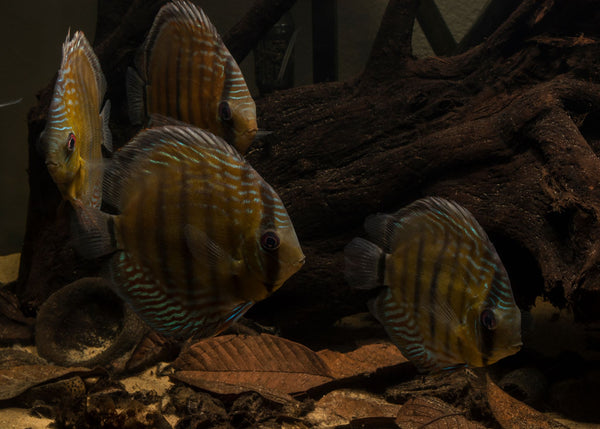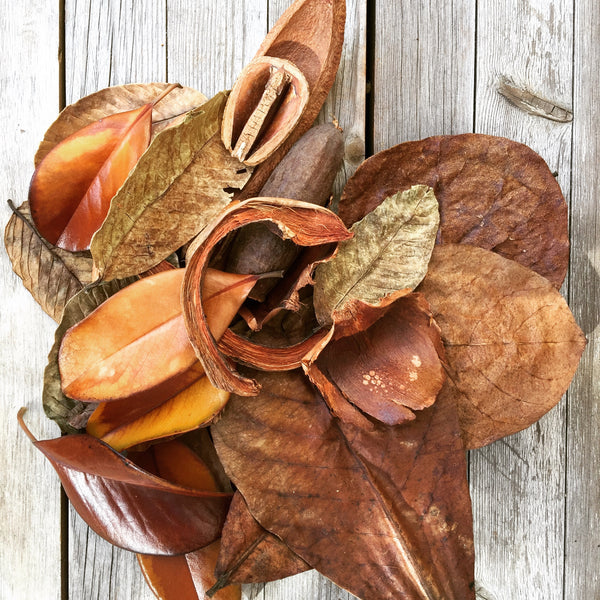- Continue Shopping
- Your Cart is Empty
Points of origin and the influences of botanicals on our fishes...
As we see more and more aquariums devoted to botanical-influenced, blackwater environments, we're getting more and more questions about what botanical would be appropriate for a given region that an aquarist is attempting to replicate.
Now, we've sort of touched on this before, and it bears further discussion at this point, I think. First off, many of the botanicals we work with are found in multiple tropical regions of the earth, and as such, could be suitable to represent a variety of habitats from around the world. Others are tied more specifically to a given region, and would obviously be most appropriate in an aquarium representing that region.

That being said, it's always sort of a delicate point, IMHO, trying to replicate a specific area with natural materials, because it really depends upon how "hardcore" you are-or the Judges- if it's a tank destined for a competition. I suppose if you're entering your aquarium in a biotope competition, and part of the judging criteria is based upon utilizing appropriate materials, you'd be hard-pressed to explain the presence of a botanical or leaf from Southeast Asia in your Amazonian Igarape biotope aquarium! Although I am curious if the judges are more concerned about general adherence to "theme" and/or the correct live aquatic plants, and if they will truly not be put off by a seed pod from a different continent?

On the other hand, if you're like many of us, you recognize that your aquarium is a representation of a natural habitat- a "reasonable facsimile"-and you'll cut yourself some slack in this regard. So, for example, if you're trying to represent that Amazonian stream, it's okay to include some Jackfruit leaves from India or some Catappa leaves from Borneo as substitutes for endemic trees...to most observers, "a leaf is a leaf", regardless of wether it originates in Southeast Asia, North America, or India! And our interest in this stuff is far deeper than something as vapid as a competition...
As we evolve at Tannin, we're pressing our global suppliers to provide us with more "region-specific" botanicals and leaves, and will make a greater effort to inform you of the "point of origin" of some of the various botanicals that we offer on our website. Look for some very unique, very interesting materials later this year! The idea of "point of origin" will help those of you who are seriously "hardcore" make more informed decisions about what to include in your biotope aquarium ( okay...or your competition-bound aquascape, too)...and more important, help drive more detailed studies into the impact that regionally-appropriate botanicals influence the environments we want to replicate, and the fishes we want to keep!
Now, in the future, there will no doubt be the ability to do more scientific-oriented studies on what terrestrial botanical items specifically impact the water chemistry in various parts of the world, and that would definitely be "next level" stuff! Can you imagine being able to add region-specific materials, ranging from wood to seed pods, to your aquarium that represents a specific locale? THAT would be a definite reason to stay "locked in" to materials from a given region!
In general, if you look at some of the stuff that falls into the streams and waterways of the tropical world, a lot of the leaves are from various rainforest trees. Catappa, Guava, and the many palm-derived items we offer here at Tannin Aquatics are great "facsimiles", as mentioned above, but are not 100% authentic to what you will find in nature in every aquatic habitat. Kind of like "generic" terrestrial materials, if you will!
Are there very specific humic substances and other chemicals derived from specific plant materials, which influence the waters of say, given streams in Southeast Asia? Perhaps. It is known that the concentrations of terrestrial items in the water at different times of the year play an important role in the way fishes feed, so perhaps that's a good starting point for us to explore the influences in our aquarium endeavors.

An interesting study I read on South American streams found that fruits and seeds became very important to many omnivorous species as part of their diet during the high-water season. As the forests are inundated, greater concentrations of terrestrial materials are found in the water, and this provides specialized feeders with the ability to consume their more selective diets than in the dry season, when the significant reduction of these items results in far less feeding "selectivity" by the fishes. In other words, they "take what they can get" during these times!
Detritus, epiphytic algae, and good old mud are quite abundant in these waterways. The mud and detritus originate from the deposits of materials brought into the dry areas by the overflowing rivers, as well as from the decomposition of the rainforest litter incorporated into the aquatic environment during the seasonal flooding. Epiphytic algae production is aided by the large influx of nutrients present during this time. During the In the low water periods, this organic layer helps compensate for the shortage of other food resources. Insects- both terrestrial and aquatic, support a large percentage of the fish community.

So, it could even be possible to utilize various types of botanicals in our aquariums by increasing their amounts on a seasonal basis, in order to perhaps mimic this process of "seasonal abundance" in nature. This goes hand in hand with varying the diets of our fishes as well. Sure, it would be a little bit of a process to "edit" the botanical concentrations of our aquariums, and revise food offerings at different times of the year, but could this be something that ties into age-old natural influences on our fishes' life cycles, providing more optimal conditions for reproduction and growth? Fun to ponder, huh?

So, we can see that understanding the point of origin of some of the botanicals we use could have some interesting tangential benefits for our fishes. The hardcore biotope hobbyists are perhaps on to something with their rigid adherence to the "local stuff only" rules...although I'd hazard a guess that not a single one of 'em has thought about it in the context of stuff like seasonal food availability for fishes and the influence of these materials on water chemistry on a more specific basis!
There is so much to learn and perhaps benefit from studying in greater detail these specialized impacts on our fishes...It would be extremely interesting to see if there truly are advantages to replicating such occurrences and influences from nature in our captive systems. It's all a matter of just how deep you want to go...and perhaps, it all starts with thinking about the "points of origin"- not only of the materials that we want to use in our aquariums, but of the fishes themselves.
Hope I succeeded in getting you to think about these tings from a slightly different angle. The opportunity to work with botanicals to create amazing functional aquariums that can provide us with an insight into processes occurring in the natural world can really take the hobby to another level is something we can all contribute to!
Excited yet?
Stay focused. Stay engaged. Stay fascinated.
And Stay Wet.
Scott Fellman
Tannin Aquatics














Scott Fellman
Author